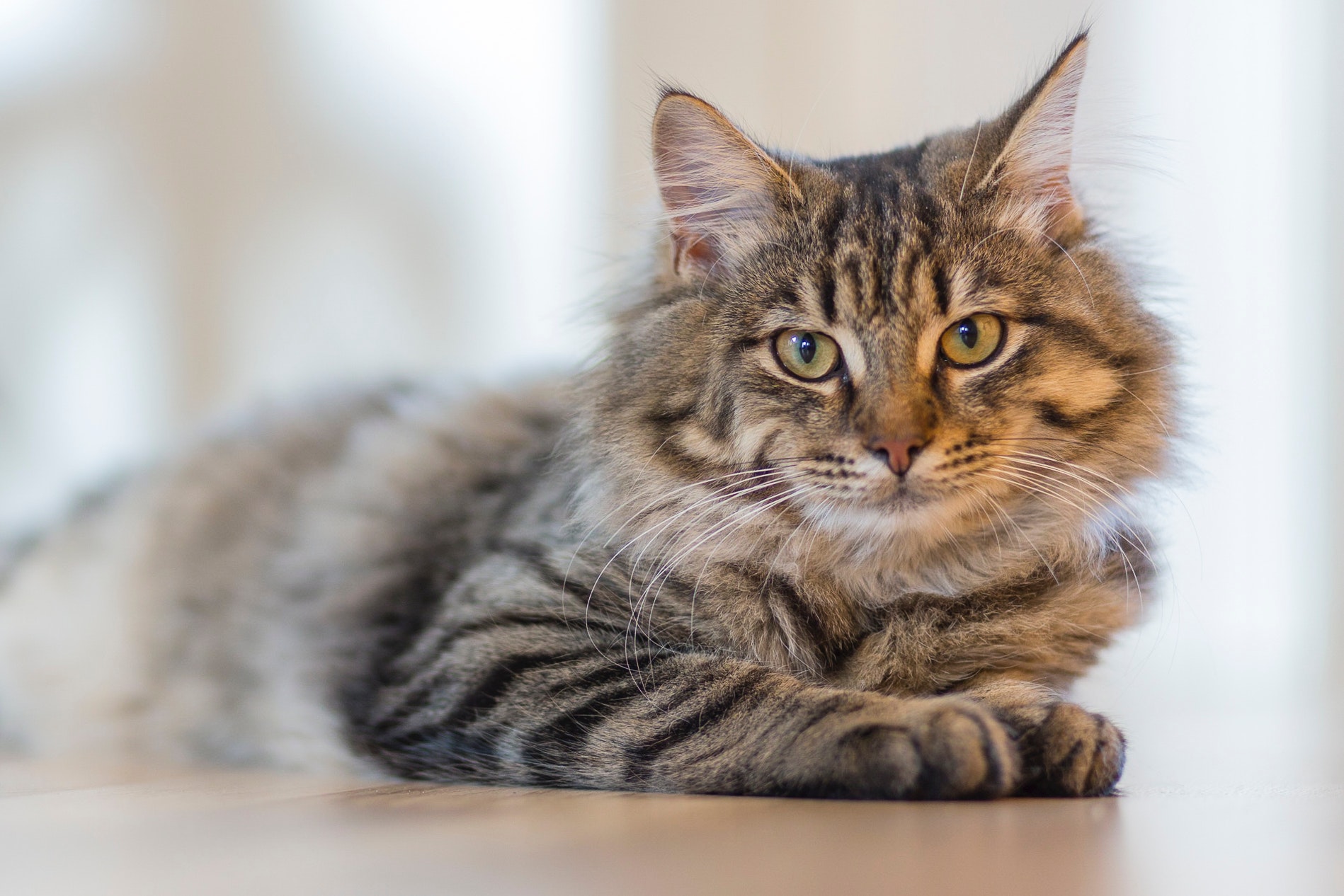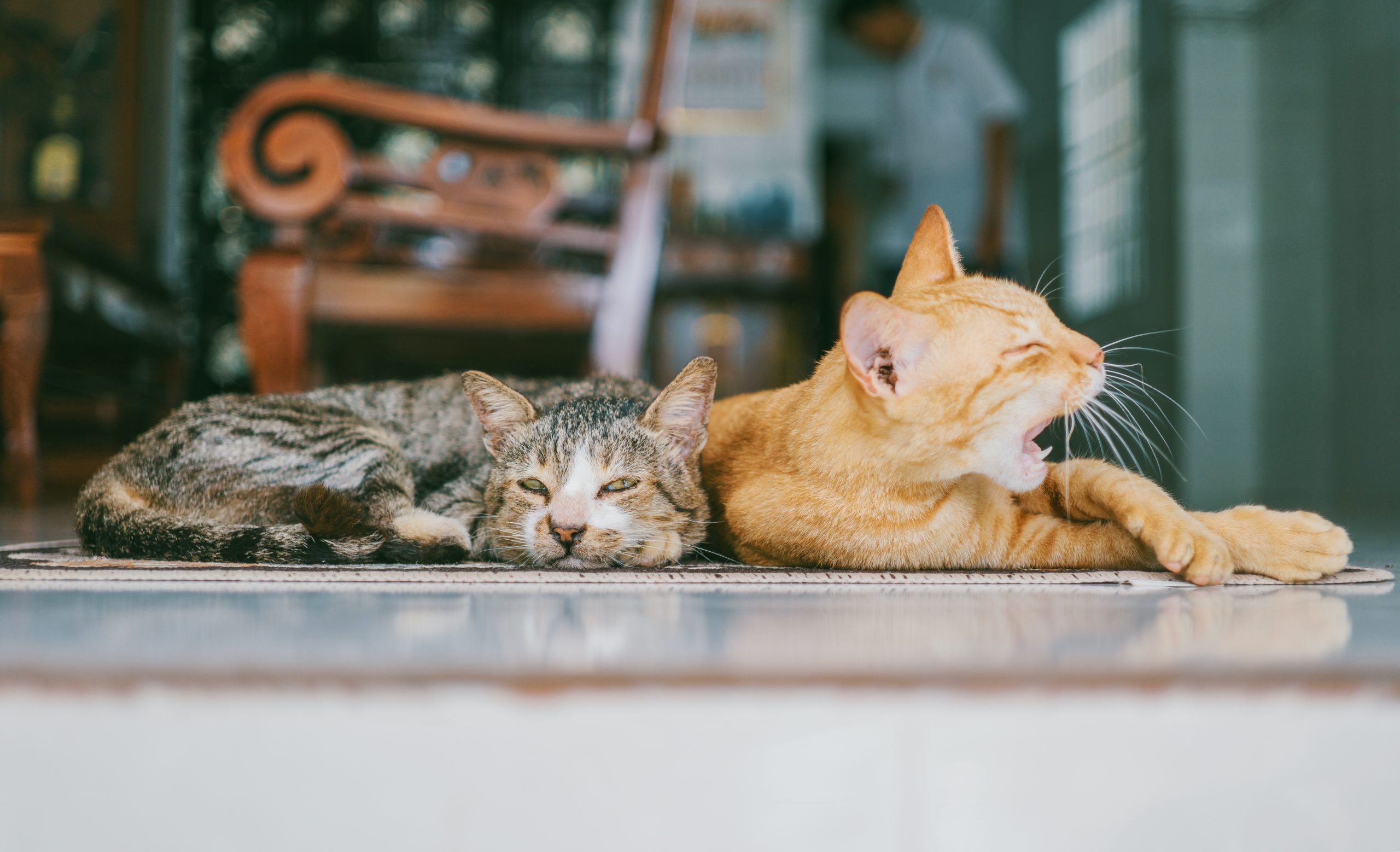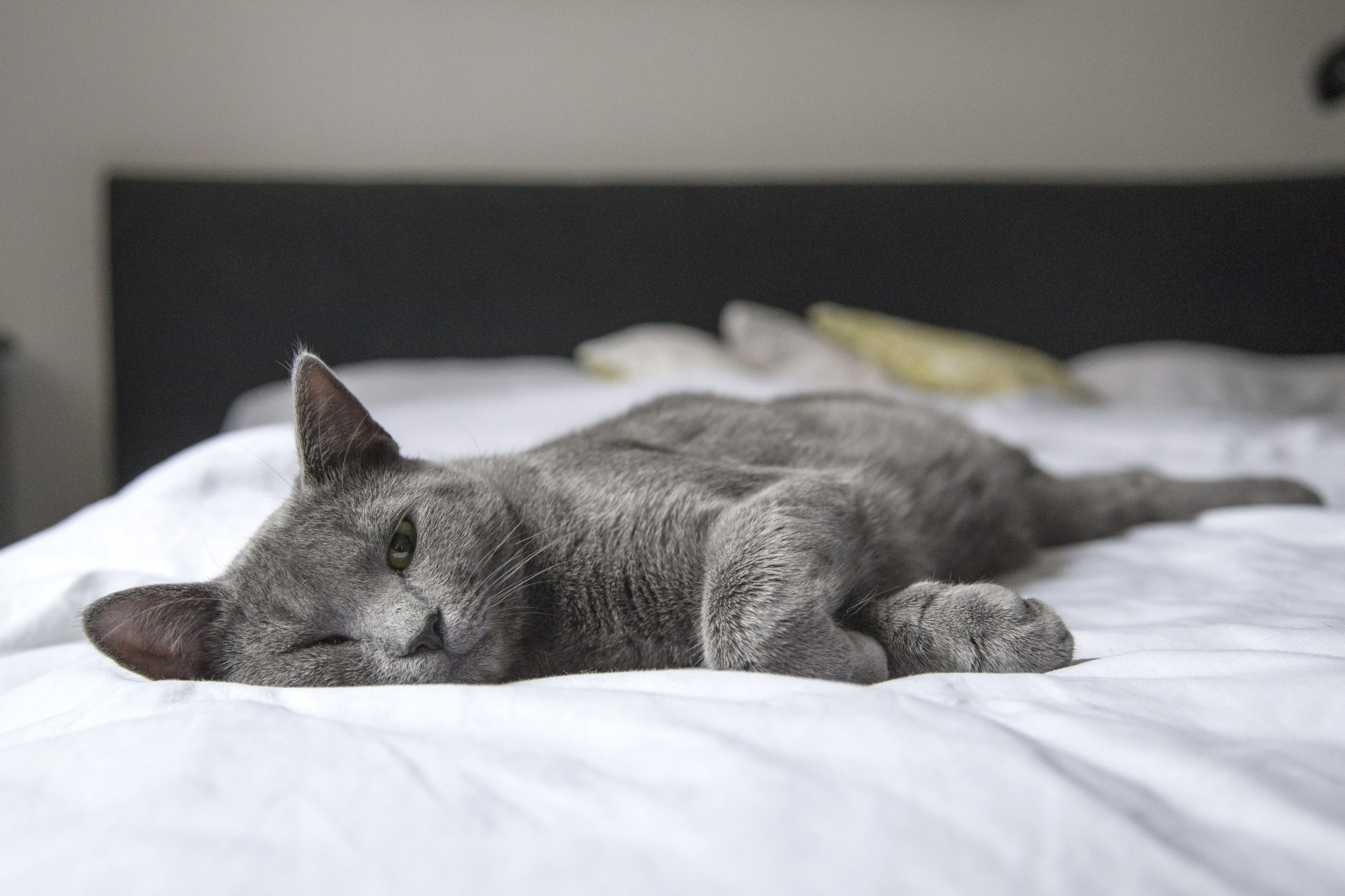Has your cat been vaccinated in the last 12 months? Vaccination is the only way to protect your cat against a group of deadly diseases.
Vaccinating your cat stimulates its immune system to produce antibodies against a particular strain of virus or bacterium, preventing it from causing disease or reducing the severity of the symptoms.
There are 3 major cat diseases caused by viruses in Australia that are highly infectious and cause serious illness or even death:
- Feline panleukopenia virus
- Feline respiratory disease (“Cat flu”)
- Feline leukaemia virus
Feline panleukopenia virus
Feline panleukopenia virus (FPV) is also known as feline infectious enteritis, feline parvoviral enteritis (“feline parvo”), feline ataxia, feline distemper or cat plague. Feline panleukopenia is a highly contagious and deadly viral disease – few cats recover from an attack. Cats of all ages can be affected but kittens and young cats are especially at risk. The virus causes enteritis (inflammation of the intestinal tract) and the onset of signs can be very sudden, including:
- High fever
- Depression
- Loss of appetite and rapid weight loss
- Vomiting and/or diarrhoea
- Sudden death, especially in kittens
- Pregnant cats may lose their kittens or give birth to dead or abnormal kittens
Even with intensive care, few cats survive and some that do survive may become ‘carriers’ of the virus, shedding it into the environment to infect other cats.
The virus is very tough and can survive in the environment for long periods, resistant to many common disinfectants and extremes of temperature. Cats can pick up the virus from infected cats and anything contaminated with their droppings, including bedding, feed bowls, clothing and hands of owners.
While FPV was nearly eradicated in Australia in the mid-1970s through vaccination, small outbreaks were reported in Victoria in 2015 and a serious outbreak affected Sydney cats in early 2017.
Feline respiratory disease
Feline respiratory disease or “cat flu” is a highly contagious disease caused by 2 different viruses – feline rhinotracheitis virus (feline herpesvirus) or feline calicivirus – which result in similar signs:
- Sneezing
- Discharges from the nose and eyes
- Tongue and mouth ulcers
- Coughing
- Loss of appetite, dehydration and weight loss in more severe cases
Although your cat can suffer much discomfort, death is not common. Kittens and young cats are usually more severely affected. Recovered cats may become ‘carriers’ and spread the disease to other cats.
Feline leukaemia virus
Feline leukaemia virus (FeLV) is spread between cats by fighting or by grooming each other. It causes an immunodeficiency syndrome like feline AIDS and predisposes the cat to other illnesses and cancer.
Of all cats that are infected with FeLV, about a third of them remain infected and can, therefore, pass the disease on to others. Infection is transmitted by saliva, tears, nasal secretions and urine. The virus can also be transmitted to other cats when they groom each other, or when food bowls, litter trays, toys and so on are shared.
The first sign is usually a reduction in appetite. Depression and weight loss occur as does vomiting and diarrhoea. Reproductive problems occur and it also causes increased susceptibility to other infections. Solid tumours can develop in various parts of the body. Death is slow and usually occurs within three years.
Feline chlamydia
Feline chlamydia (the bacterium Chlamydophila felis) is a common cause of respiratory problems in cats. This disease is principally recognised as conjunctivitis and is seen predominantly in young kittens aged 5 to 9 months. Vaccination against feline chlamydia will reduce the duration and severity of clinical signs in cats that are exposed to high challenge situations, such as exhibitions, cat shows, stud cats etc. Your veterinarian will recommend this vaccination if your cat is considered to be at risk.
Feline immunodeficiency virus
Feline immunodeficiency virus (FIV), commonly known as feline AIDS, is spread by cats fighting. Just like HIV and human AIDS, cats infected with FIV can develop a reduced ability to fight off infections as the disease progressively disables the immune system. There is no treatment or cure for the virus itself.
The FIV vaccine is administered as an initial series of three doses, two to four weeks apart. It is given to kittens at 8 weeks of age or older. Cats more than 6 months of age should be tested to ensure they are free of FIV before being vaccinated and ideally they should be permanently identified with a microchip. An annual booster is needed to ensure continued protection. Your veterinarian will recommend this vaccination if your cat is considered to be at risk.
FIV is specific to cats and is not transmissible to humans, dogs or other animal species.
When should my cat be vaccinated?
Vaccination to prevent these diseases is crucial to your cat’s health, but will not prevent disease in cats already infected.
Kittens are vaccinated at approximately monthly intervals from 6 to 8 weeks of age until 16 to 18 weeks of age, then vaccination is annual. Kittens are given these boosters because the antibodies they got from their mother actually interfere with the effectiveness of the vaccine. Since kittens lose these antibodies at different rates, we give several vaccinations to ensure all kittens will develop sufficient levels of antibodies to protect them during their first year of life.
The standard vaccination is called an F3 as it protects against feline panleukopenia and both cat flu viruses (feline herpesvirus and feline calicivirus). An F4 includes feline chlamydia and an F5 also provides protection against feline leukaemia virus. The FIV/feline AIDS vaccine is available separately.
Vaccination programs may vary depending on risk factors, the age of first vaccination and the type of vaccine used. Your veterinarian will advise you on the best program for your cat.
Will my cat have a reaction?
Vaccine reactions are rare. Some cats may be a little ‘off colour’ for a day or two after vaccination or be tender at the vaccination site with a little swelling. These signs are no cause for alarm, but if you are concerned or there are more serious signs you should contact your vet immediately.



